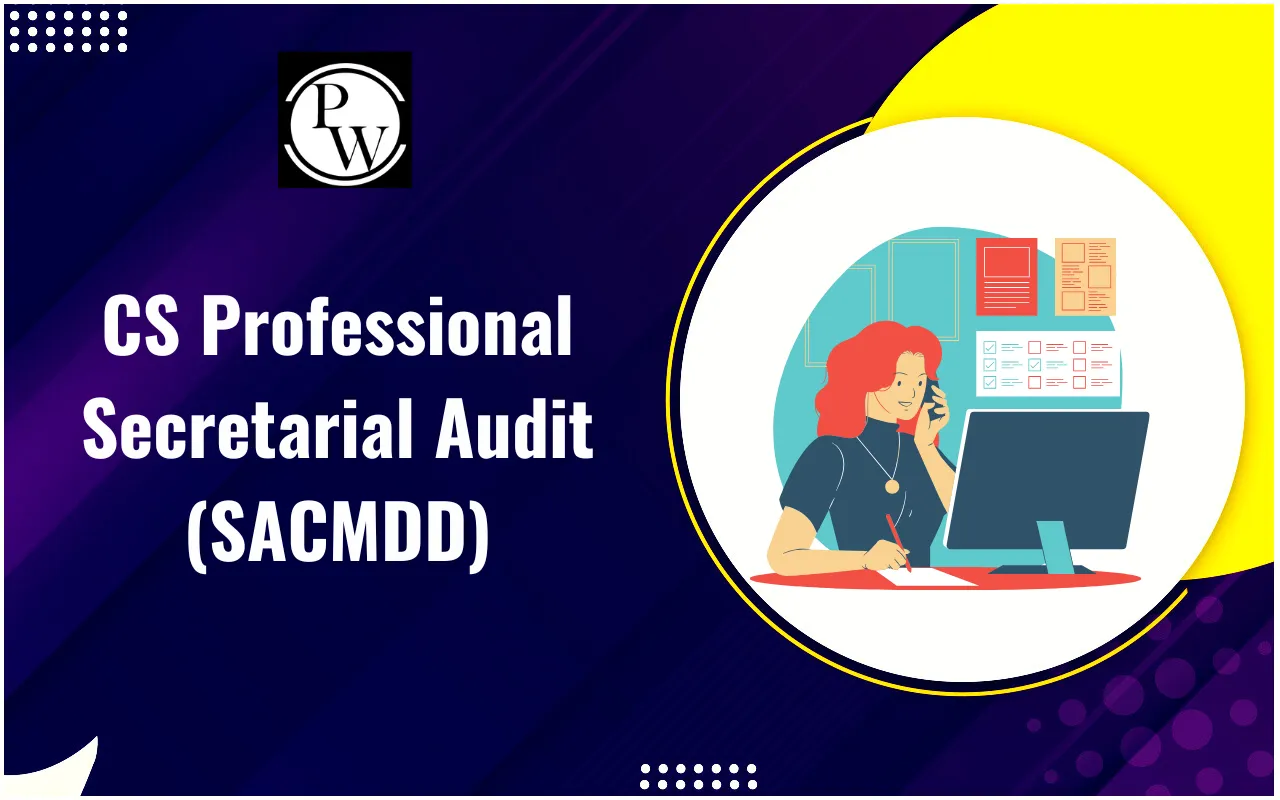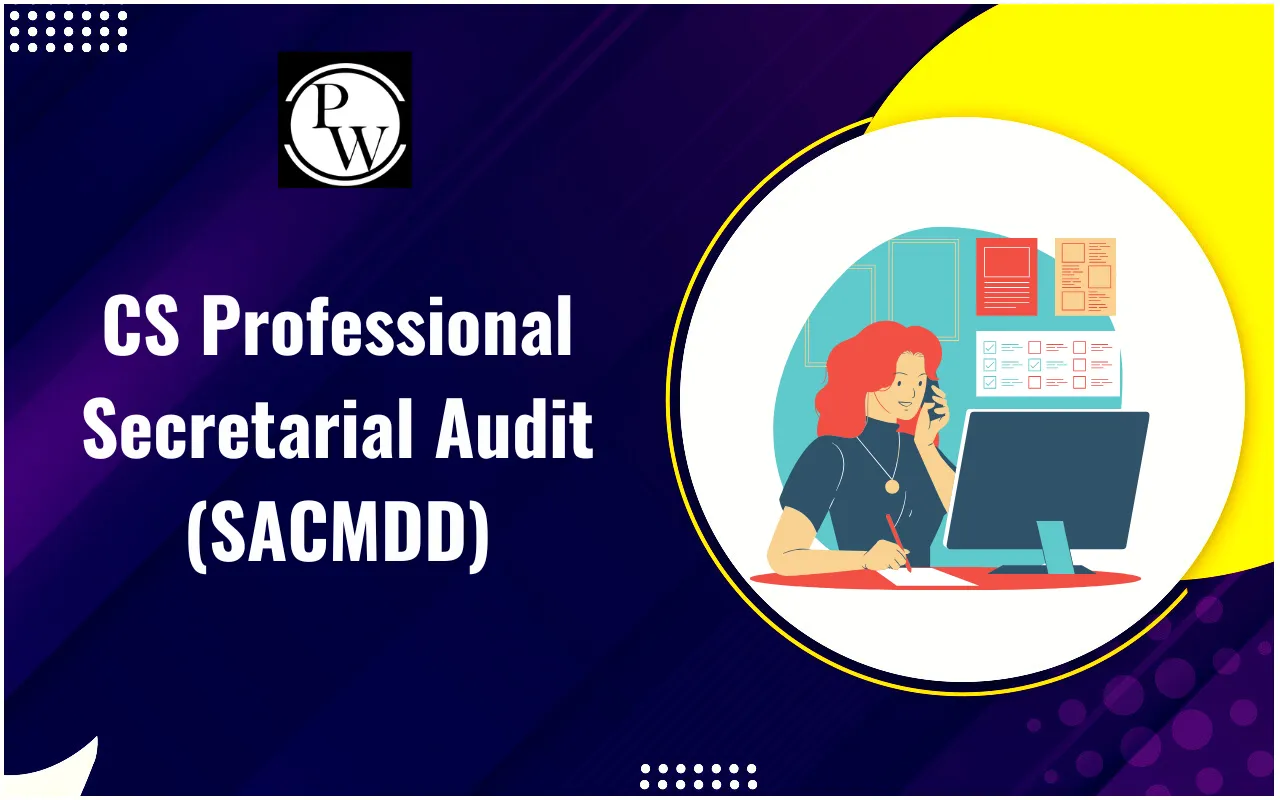
CS Professional Secretarial Audit: Students who are preparing for professional exams find it is never easy, and the CS Professional Secretarial Audit, Compliance Management, and Due Diligence paper requires a structured plan. Many students call this subject CS Professional Secretarial Audit SACMDD.
It is part of Group 1 and is known for being a theory-based subject. While the subject may seem easier compared to others, students should not take it lightly. With consistent revision, proper answer writing practice, and an organized study plan, this paper can become more manageable. Below, we’ve explained how students can prepare for the CS Professional Secretarial Audit (SACMDD), understand the syllabus, and follow strategies to perform well in the exam.
CS Professional Secretarial Audit (SACMDD)
CS Professional Secretarial Audit (SACMDD) is divided into two broad parts: Secretarial Audit and Due Diligence with Compliance Management. Part A covers Secretarial Audit for 25 marks. On the other hand, Part B covers Due Diligence and Compliance Management for 75 marks. Together, these topics build the foundation for future responsibilities of a Company Secretary. A student should focus on both theory and application, as this subject contains elements from company law, securities market, and restructuring.
CS Professional Secretarial Audit (SACMDD) Syllabus Overview
The syllabus of CS Professional Secretarial Audit (SACMDD) is structured into 12 chapters. These chapters cover concepts of secretarial audit, different kinds of due diligence, issues of securities, corporate restructuring, competition law, and compliance management. Below, we’ve mentioned the CS Professional Secretarial Audit SACMDD Syllabus Overview:
| CS Professional Secretarial Audit (SACMDD) Syllabus Overview | ||
| Part | Topics | Marks |
| Part A | Secretarial Audit and Checklist | 25 |
| Part B | Due Diligence (various areas), Issue of Securities, Compliance Management | 75 |
Preparation Strategy for CS Professional Secretarial Audit (SACMDD)
For students to prepare well for the CS Professional Secretarial Audit SACMDD, students should follow a structured plan. Below we’ve some important strategies:
Understand the Subject: Instead of memorizing everything, understand why each concept is important. For example, why companies need a secretarial audit or why due diligence is required.
Start with Part A: Complete the two chapters on secretarial audit early. This gives confidence as students have secured 25 marks early in their preparation.
Move to Part B in Stages: Start with corporate restructuring, then smaller due diligence chapters, and finally securities market chapters, which take more time.
Revise Regularly: Since this is theory-based, revision plays a big role. Write down short notes to make revision easier.
Practice Previous Year Papers: Attempting past papers helps in understanding the type of questions asked.
Work on Presentation: Write in paragraphs, underline key terms, and avoid vague answers. Neatness in writing can make a difference in scoring.
Make Use of Checklists: Secretarial Audit involves checklists, and preparing them will help retain important points.
Chapter-Wise Preparation Strategy for CS Professional (SACMDD)
Each chapter has a specific focus. Some are short and simple, while others need more time and effort. Below, we’ve mentioned a chapter-wise preparation approach:
| Chapter-wise preparation strategy for CS Professional Secretarial Audit (SACMDD) | |
| Chapter | Preparation Strategy |
| Lesson 1: Secretarial Audit & Standards | Focus on objectives, needs, benefits, and penalties. Prepare a summary sheet for revision. |
| Lesson 2: Checklist, Secretarial Audit | Prepare checklists for different laws, like the Companies Act, FEMA, etc. Revise these often. |
| Lesson 3: Due Diligence, Overview | Understand the meaning, scope, and types of due diligence. Students should prepare definitions in their own words. |
| Lesson 4: Issue of Securities | Study IPO, FPOs, rights issues, bonus issues, and ESOPs. Focus on compliance steps. |
| Lesson 5: Depository Receipts Due Diligence | Revise ADR, GDR, FCCB, and related compliance framework. Prepare small flowcharts for procedures. |
| Lesson 6: Due Diligence, Merger and Amalgamation | Focus on procedural steps, legal requirements, and key documents. |
| Lesson 7: Competition Law Due Diligence | Revise concepts of anti-competitive agreements, abuse of dominance, and combinations. Make a simple checklist. |
| Lesson 8: Legal Due Diligence | Understand process, hurdles, and remedies. Note down important steps in the process. |
| Lesson 9: Due Diligence for Banks | Study compliance checklists and the scope of due diligence for banks. Revise in short points. |
| Lesson 10: Environmental Due Diligence | Focus on environmental law requirements, impact assessment, and compliance obligations. |
| Lesson 11: Search/Status Report | Learn the meaning, purpose, and process of preparing reports. Revise provisions of the Companies Act on charges. |
| Lesson 12: Compliance Management | Understand apparent, adequate, and absolute compliance. Revise the systems approach to compliance management. |
CS Professional Secretarial Audit (SACMDD) is an important subject that prepares students for secretarial audit, compliance management, and due diligence responsibilities. With proper planning, regular revision, and answer writing practice, students can perform well in this paper. Remember that selective study should be avoided. Every chapter holds significance. Students should keep their studies simple, write in their own words, and revise often. By following structured preparation strategies and chapter-wise plans, students can build confidence and score well in the exam.
CS Professional Secretarial Audit FAQ
What is CS Professional SACMDD?
How many chapters are in SACMDD?
How should I start preparing?




